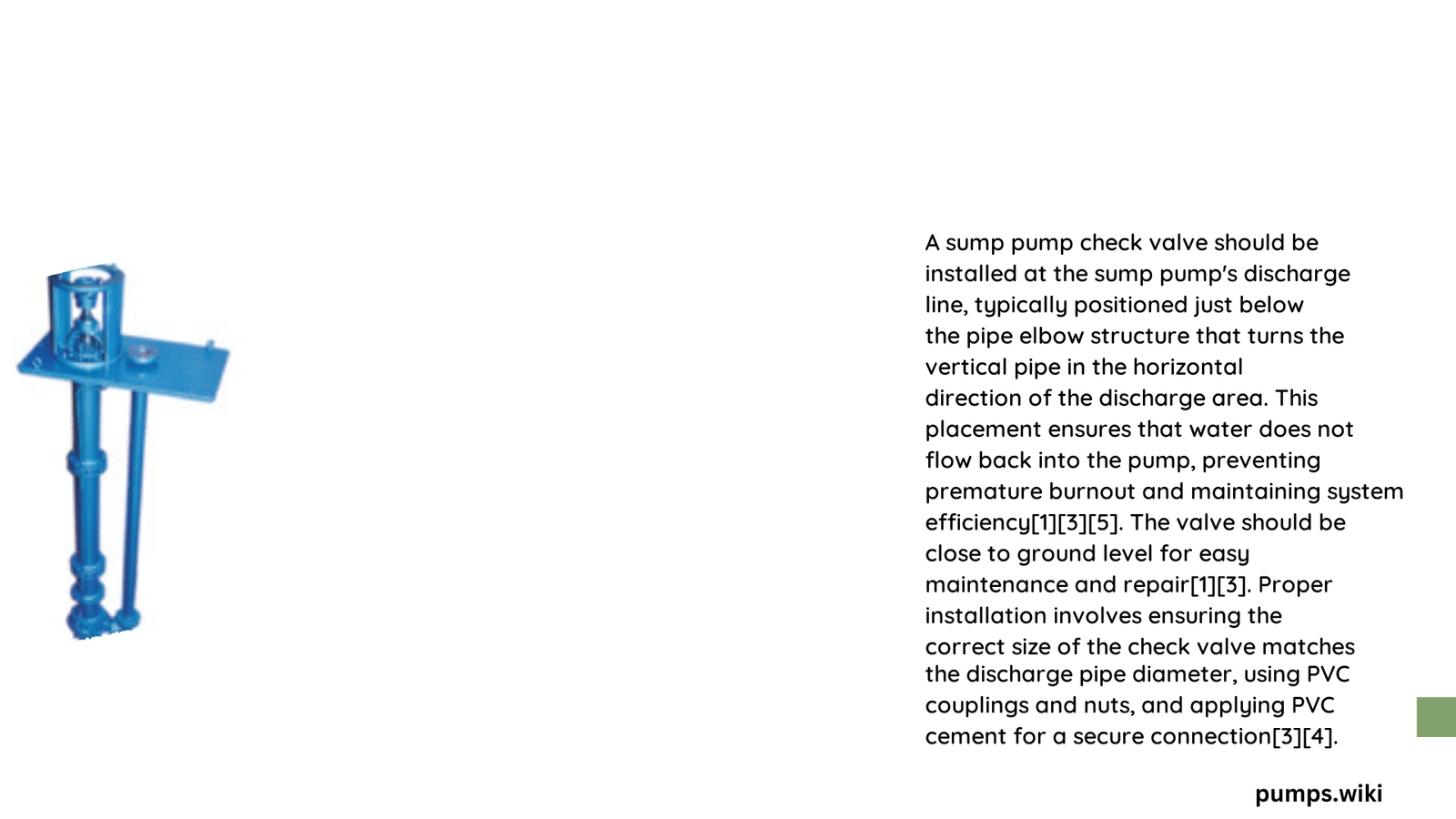Sump pump check valve placement is a critical aspect of basement waterproofing that directly impacts system performance and prevents water backflow. Proper positioning ensures efficient water drainage, reduces pump strain, and minimizes potential flooding risks. Homeowners and professionals must understand precise installation techniques to guarantee optimal functionality and long-term protection against water damage.
Why Does Sump Pump Check Valve Placement Matter?
What Makes Check Valve Positioning Critical?
Check valve placement determines the effectiveness of your sump pump’s water management system. Incorrect positioning can lead to:
- Increased pump wear
- Potential water backflow
- Reduced system efficiency
- Higher energy consumption
How Close Should Check Valve Be to Sump Pump?
| Placement Criteria | Recommended Distance | Impact |
|---|---|---|
| Vertical Rise | Minimum 2 feet | Ensures positive sealing |
| Proximity to Pump | Immediate discharge point | Minimizes water accumulation |
| Orientation | Vertical or 45° horizontal | Prevents debris settlement |
What Tools Are Required for Proper Installation?
Essential tools for sump pump check valve placement include:
- PVC couplings and nuts
- PVC cement
- Sandpaper
- Hacksaw
- Tape measure
- Safety goggles
- Compression wrench
Step-by-Step Check Valve Installation Process

How Do You Prepare for Installation?
Before beginning, follow these critical preparation steps:
- Disconnect power to the sump pump
- Drain existing discharge pipe
- Gather all necessary tools and materials
- Wear appropriate safety equipment
What Are the Precise Installation Techniques?
Pipe Preparation
- Measure and mark precise cutting points
- Use hacksaw for clean, straight cuts
- Sand pipe ends for smooth connections
- Apply PVC primer before cementing
Valve Positioning
- Install valve close to pump discharge
- Ensure flow arrow points away from pump
- Maintain minimum 2-foot vertical rise
- Use compression fittings for secure connection
How Often Should Check Valves Be Maintained?
Recommended maintenance schedule:
- Visual inspection: Every 6 months
- Comprehensive check: Annually
- Replace if signs of wear appear
- Test functionality during seasonal transitions
Common Placement Mistakes to Avoid
What Errors Compromise Check Valve Performance?
Critical mistakes include:
- Installing too far from pump
- Ignoring vertical rise requirements
- Incorrect orientation
- Using damaged or worn valves
- Neglecting regular maintenance
Advanced Placement Considerations
How Do Environmental Factors Impact Placement?
Consider these environmental variables:
- Basement humidity levels
- Soil moisture content
- Frequency of water table fluctuations
- Local precipitation patterns
Professional Recommendations
What Do Experts Suggest?
Professionals recommend:
– Professional assessment for complex installations
– Using high-quality, corrosion-resistant valves
– Implementing backup systems
– Regular professional inspections
Conclusion
Sump pump check valve placement requires precision, understanding, and consistent maintenance. By following these guidelines, homeowners can ensure effective water management and protect their property from potential water damage.
